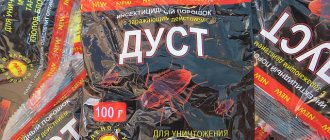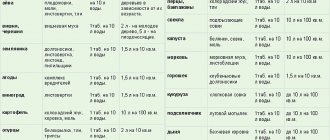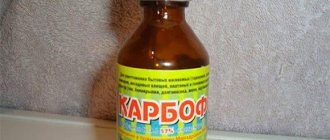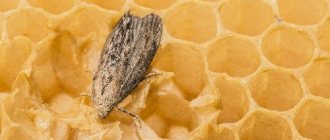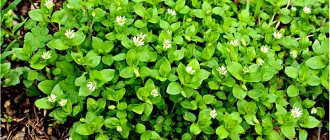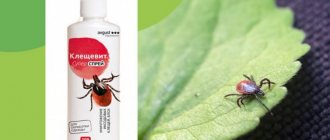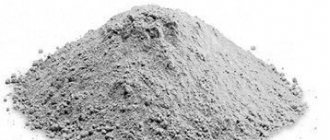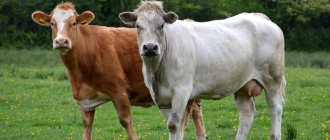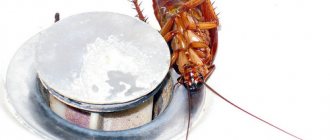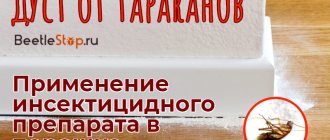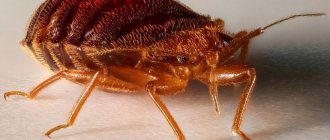Types of pesticides
For each type of treatment, certain pesticides are used:
- Herbicides control weeds.
- Insecticides kill harmful insects.
- Fungicides – relieve plants from fungal diseases.
- Zoocides - poison rodents.
Note. A number of these poisons include blockers of the reproduction and growth of organisms.
Pesticides stop biological processes in harmful organisms:
- Bacteria.
- Weeds.
- Insects.
They are mainly used:
- In field farming.
- Processing industry.
- Forestry.
Note. Their benefits are undeniable. A side effect of their use can be considered the harm they cause to nature - birds, animals, humans.
Pesticides are classified according to the main substance into 4 types
This:
- Chlorine-containing.
- Phosphorus-containing.
- Contains metal.
- Alkaloids (with nitrogen).
Note. Nitrogen-containing pesticides are especially dangerous to human health.
The symptoms of poisoning are poorly identified, and therefore it is difficult to diagnose it with this substance:
- Pesticides fight insects, field rodents, and weeds.
- They do not cause direct harm to humans, but when they enter the body with food and water, they accumulate there and poison the organs of the digestive tract.
Damage may occur through direct contact with the substance through the skin or inhalation.
Basic properties of DDT and its analogues
DDT is a chemical that belongs to the category of substances based on organochlorine compounds. It has a crystalline structure, its color can be different - gray, white or slightly brownish. It does not interact with water, although under the influence of most organic solvents, including ketones, aromatic hydrocarbons and others, it demonstrates excellent solubility.
In the natural environment, dichlorodiphenyltrichloroethane has a long period of decomposition with a negative impact on water resources, plants and the soil itself.
Its transmission occurs along the food chain, the toxic chemical has a tendency to mutate, and when it penetrates inside a living creature, it affects the tissues and nervous system, negatively affecting the ability to reproduce.
Over time, the pesticide accumulates in the body - it is impossible to remove it through cleansing systems.
As for how DDT is deciphered, there is a combination of three components at once - dichloro-diphenyl-trichloroethane, while the content of 4,4'-isomers reaches 75%.
Among the main analogues of this insecticide, the following are particularly distinguished:
- Aldrin is a substance with fairly high toxic levels, prone to accumulation in the body and non-degradable. It has an increased danger to humans, which led to its ban in a number of countries.
- Dieldrin is a chemical based on aldrin, but in a lower concentration. It is less dangerous for living beings, therefore it is very effectively used in agriculture.
Insecticide DDT
Pesticides DDT is a compound that slowly decomposes and accumulates in the natural environment
After completing its useful mission, DDT has a toxic effect on water, soil, and plants:
- It has the ability to be transmitted along the food chain and penetrate living organisms. This pesticide exhibits mutating properties, is a carcinogen and poses a threat to all living things. But during the years of its use there were no incephalitic ticks.
- DDT accumulates in the fat cells of the liver and kidneys, the main human cleansing organs.
Note. But, despite the danger, many countries in Central Asia use dust in processing cotton fields.
Dust was used not only to control insects, but also in the treatment of malaria and typhoid:
- But it negatively affects the ability to reproduce in living beings. Scientists noticed this in the example of birds that settled in treated reservoirs.
- It accumulates in tissue cells and is not removed by cleansing systems.
Note. Dust is banned for use in many countries around the world.
Aldrin
Due to its toxicity, the dust substitute is widely used to treat plant parasites. But for humans it is as dangerous as dust.
Dildrin
It contains less aldrin and is less hazardous to health. Widely used in agriculture
Characteristics of DDT
Insecticides destroy harmful insects that eat up crops
If you miss the moment, you can lose half the harvest on the field and in storage.
In what cases is DDT pesticide used?
- Against flying insects that carry malaria.
- In the fight against pests of industrial and food crops - cotton, flax, soybeans, peanuts.
- A powerful means of combating locusts.
Dust (DDT) is a white crystalline substance that is ground into a fine powder for use.
History of the drug's creation
DDT pesticide meaning: dichlorodiphenyltrichloroethane (DDT) is an insecticide discovered in 1874 by German chemist Othmar Zeidler.
This compound did not find practical use for a long time, until in 1939 the Swiss scientist Paul Miller discovered its insecticidal capabilities and used them in the fight against malaria mosquitoes. For this great scientific research he received the Nobel Prize in Medicine in 1948.
Description of the drug
Effect of the drug
DDT is a simple, effective, inexpensive means of pest control. It is obtained by the synthesis of chlorobenzene and sulfuric acid.
It acts on the insect externally:
- Penetrating inside the body, DDT affects the nervous system of the pest.
- A microscopic amount of poison is enough to kill the larvae.
- But it exhibits a high degree of toxicity only to insects.
- In contact with the skin of an animal or person, it does not cause severe damage.
- Therefore, this remedy can completely remove parasites from the skin and coat of animals.
- Dust is often used on domestic animals - cattle, sheep, goats.
- If DDT comes into contact with a person's skin, it is enough to wash it off. There will be no harm.
- Poisoning can occur due to ingestion of the powder through inhalation or food.
Note. Signs of poisoning are dizziness, vomiting, inflammation of the mucous membranes, redness of the eyes, and weakness.
- Particular care must be taken when handling the chemical during seed treatment, when toxic dust is in the air. It is necessary to use respirators and protective clothing.
The intensity of poisoning is determined from the table as a result of experimental studies:
| Weight of a single dose of poisoning in mg/kg | Body reaction |
| Unknown | Death |
| 16—286 | Gastrointestinal poisoning, vomiting, in some cases - convulsions |
| 6—10 | Minor intoxication, not hazardous to health |
Benefits of DDT
The insecticide DDT has found application in many areas of the economy.
So:
- Effectively fights against domestic insects - flies, cockroaches, moths.
- It is used to destroy pests of garden crops - the Colorado potato beetle and aphids.
Protects crops of many crops from insects - pests in agriculture.
Degradation resistance
DDT is highly resistant to decomposition: neither critical temperatures, nor enzymes involved in the neutralization of foreign substances, nor light can have any noticeable effect on the decomposition process of DDT. As a result, when DDT enters the environment, it somehow enters the food chain. When circulating in it, DDT accumulates in significant quantities, first in plants, then in animals, and finally in the human body.
Calculation by Dahmen and Hayes (1973) showed that at each link in the food chain there is a 10-fold increase in DDT content:
Sludge containing DDT - 1x
Plants (algae) – 10x
Small organisms (representatives of zooplankton - daphnia, cyclops) - 100x
Pisces - 1000x
Predatory fish – 10000x
This rapid accumulation of DDT is clearly illustrated by the following example. Thus, in a study of one ecosystem in Lake Michigan, the following accumulation of DDT in food chains was found: in the bottom silt of the lake - 0.014 mg/kg, in crustaceans feeding on the bottom - 0.41 mg/kg, in various fish - 3-6 mg /kg, in the adipose tissue of seagulls feeding on this fish - over 200 mg/kg.
High solubility in fats and low solubility in water cause retention of DDT in adipose tissue. The rate at which DDT accumulates in the body varies depending on the type of organism, duration of exposure and concentration, and environmental conditions. The high retention rate of DDT means that toxic effects in organisms may occur with a time delay and also at a significant geographic distance from the site of exposure. In general, organisms at high dietary levels tend to accumulate greater amounts of DDT compared to organisms at lower dietary levels. DDT can be transported around the world in the bodies of migrating animals, as well as by ocean and air currents.
Thus, DDT, accumulating in living organisms, has a toxic effect on them, varying in strength depending on the concentration of DDT in the living organism.
The most popular dusts: review
Due to its popularity, dust is produced by many companies. Products of various brands may contain pure dust or contain enhancers and additives. To understand which brand to buy the drug from, check out the most popular products on the insecticide market.
Clean house
In the rating of the review of the best insecticides of 2022, the dust brand “Clean House” occupies a leading position. Sold in blue bags of various dosages. It works on the basis of tetramethrin, cypermethrin and piperonyl butoxide.
To understand how much product will be needed, it is enough to know the area of the room being treated. Information on calculating the drug based on the required area can be found on the packaging. For example, for a room with an area of 10 sq.m. you will need 50 g of powder. The packaging also indicates the method of use of the substance and precautions. For 50 g of Clean House dust you will pay 50 rubles.
Acaritox
The drug is intended for treating large areas, often non-residential. Sold in 1 kg bags. Capable of destroying not only cockroaches, but also other pests. The main active ingredient is alphacypermethrin. The product begins to work 48 hours after treatment and remains effective for 60 days. Buying Acaritox will cost 1,500 rubles.
Absolute
The drug has intestinal and nerve-paralytic effects. Works on the basis of boric acid and karbofos. The method of use and dosage is no different from analogues. The packaging contains instructions for use and recommendations for calculating the product depending on the area of the room. For 50 g of powder you will pay 50 rubles.
Tornado
The powder is available in various dosages, the weight of which is determined based on the area of the room. A product of the third class of toxicity, which contains boric acid and cypermethrin. Most people who have tried tornado control note that to eradicate the entire population of cockroaches, it is necessary to repeat the treatment after 2-3 weeks. The price of a 150 g bag is 30 rubles.
Aspid
The product is considered low-toxic, but quite effective. The main active ingredient is acetamiprid, a substance with enteric contact effects. The drug is sold in packages of 250 g, costing 1,500 rubles.
Alfatrine
The powder is sold in bags of 25 g or 1 kg. It actively affects insects already on the first or second day after application. Alphacypermethrin, which is included in the composition, destroys cockroaches due to intestinal penetration. The drug fights cockroaches, fleas, bedbugs, mosquitoes and their larvae.
Phenaxin
Like other dusts, phenaxin is designed to kill cockroaches, bedbugs, fleas and flies. The effectiveness of the product is due to the work of fenvalerate and boric acid contained in the composition. For the best results, the manufacturer recommends preparing aromatic baits based on the powder. The cost of a 125-gram sachet is 50 rubles.
Chinese dust
The product, according to people who have tested it, is considered more effective than its Russian counterparts. In fact, Chinese dust contains the same components as domestic ones, but their action and processing results are no different. In addition, such a product is difficult to buy in a store; you will need to order it on online resources for Chinese goods.
Ecokiller
A distinctive feature is the absence of toxic harm to humans. The powder is suitable for use by allergy sufferers or people suffering from respiratory diseases. The drug destroys the chitinous cover and causes dehydration of the insect's body due to the diatomaceous earth contained in it.
Regent
The product is used to exterminate cockroaches and cockroaches in the apartment, as well as to remove pests from the garden. The powder contains a strong insecticide - fipronil, which causes a nerve-paralytic effect on the insect. To die, a cockroach only needs one contact with the regent. Experienced exterminators also recommend preparing aromatic baits based on the powder. In this case, the insecticide will enter the insect’s digestive tract. In this case, the effectiveness of the drug will double.
Pyrethrum
The main active component of the substance is dried Dolmatian chamomile flowers. The uniqueness of the drug is its complete lack of toxicity for humans. When it gets on the cover and into the cavity, the active component causes disruption of the internal organs and immobilizes the insect's body, as a result of which the cockroach dies.
DDT's exploits in the name of humanity
Mechanism of action
Typhoid epidemic in Naples in 1944. More than a million people were sprayed with a dust solution, which led to the destruction of lice that carry typhus. The disease has subsided. They successfully fought typhus with the help of dust in many other hot countries.
DDT significantly increased crop yields:
- Quick achievement of results, low price, simple production technology increased the use of DDT.
- Insufficient research has led to its widespread and uncontrolled use.
The effective drug was used both industrially and in households. This led to pollution of water bodies, soils, vegetation, and a negative impact on the human body.
The creation of the drug and its trace in history
Othmar Zeidler is a chemist through whose efforts this substance was synthesized in 1873. However, it was not used for a long time and only in 1939, thanks to the efforts of P. Müller, a Swiss chemist, the insecticidal properties inherent in dichlorodiphenyltrichloroethane were revealed. Already at the beginning of 1942, DDT went on sale, quickly gaining popularity around the world.
Chemical formula of dichlorodiphenyltrichloroethane
With its help, it was possible to effectively resist typhoid and malaria, diseases that at that time had the greatest degree of danger to humanity. Spraying alone was enough to ensure reliable protection of the area over the next few months.
Müller's efforts were appreciated, and already in 1948 he received the Nobel Prize in Medicine. However, the substance DDT also had a number of negative characteristics, which led to significant environmental pollution in many countries. As a result, already in the early 70s of the last century, serious restrictions on its production and use came into force, which are still relevant today.
Among the main merits attributed to dichlorodiphenyltrichloroethane, one cannot fail to note the following:
- It was thanks to DDT that a typhus outbreak in Naples in 1944 was localized. This was the first time in history that a winter epidemic was stopped;
- thanks to the use of DDT, deaths from malaria that struck India in 1965 were avoided;
- in the same India for 50-60 years. Dum-Dum fever was rampant, but thanks to the use of the drug, many problems were avoided.
According to statistics published by the American National Academy of Sciences, as of 1970, thanks to the pesticide DDT, the lives of over half a billion people on the planet were saved.
Fighting epidemics with DDT spraying
Does using pesticides save people or kill birds?
Put on your protective suit and respirator because today we're going to take a very close look at the pesticide DDT, with opinions on both sides being taken into account. DDT has been used since the 1930s. Its primary purpose is to combat malarial mosquitoes, typhoid lice, CC flies and other insects that carry diseases, in which the pesticide has proven to be extremely effective. Its use was so successful during World War II that the creator of DDT was awarded the Nobel Prize in Medicine in 1948. The pesticide DDT also turned out to be effective in protecting crops from various pests and remains so. But several decades later, DDT became controversial. Opponents began talking about the pesticide's impact on human and animal health. This mainly concerned birds laying eggs in too thin shells and potentially dangerous diseases to humans. In response to increased concern, the pesticide DDT was banned in many countries. But the contradictions did not stop. Since the ban is based primarily on the protection of birds, it has been condemned as being overly cautious, since concern for bird populations is leading to a marked increase in human mortality from malaria in the Third World. In fact, DDT is making a comeback and is being produced in increasing quantities by India, China and North Korea for use in agriculture and to fight malaria.
DDT is dichlorodiphenyltrichloromethylmethane, a completely synthetic substance that does not exist in nature. It is a white, waxy powder that does not dissolve in water and therefore does not pollute it. DDT is easily soluble in oil and solvent. The pesticide is used in the form of a white smoke-like mist. DDT kills insects by short-circuiting their neurons, causing spasms and death. The hydrophobicity of DDT is both good and bad at the same time. Without dissolving in water, DDT does not pollute it. But it is not washed away by precipitation, remaining for a long time where it was used.
DDT would probably never have been banned had it not been for the 1962 book Silent Spring, the title of which invokes dead birds. The author, Rachel Carson, was a popular writer who died just two years after the book's publication. Carson was a marine biologist working for the US Fish & Wildlife Service. I got the opportunity to leave the service after writing a trilogy about the sea. The books became a bestseller in the 1950s, and the public was captivated by the poetic narrative of everything related to beaches, islands, the depths of the seas and the living creatures that inhabit them. The publications that followed the trilogy revealed the problems of environmental conservation, criticizing industry, government and human influence on our planet louder and louder.
"Silent Spring" was published in the New Yorker magazine before the book was published and it was probably the harshest story, although it was beautifully written. The book blamed DDT for its health hazards and widespread environmental impacts, namely on bird populations. Undoubtedly, the book became the starting point for the decision to ban the pesticide in the United States and other countries. One Environmental Protection Agency writer said:
“Silent Spring played as much of a role in the abolition of DDT as Uncle Tom's Cabin played in the abolition of slavery.”
Rachel Carson's list of posthumous awards is quite impressive, testifying to the depth of recognition of Silent Spring not only among environmentalists, but also in the public consciousness. President Jimmy Carter awarded Rachel the Presidential Medal of Freedom. Her portraits appeared on postage stamps of several countries. A bridge in Pittsburgh and a government building in Harrisburg are named after her. The list of parks, schools, educational programs, scholarships and nature reserves named after Rachel Carson would take up an entire page.
The main thesis of Silent Spring is that DDT harms bird populations by reducing the thickness of eggshells. The book does not describe the mechanism of action; an explanation was proposed later by other researchers. The process of influence is now almost completely understood. In short, DDT affects the glands that are responsible for producing calcium carbonate for eggshells, causing them to become thinner. Thinner egg shells can lead to the death of the embryo. Eggshell thinning is the main concern regarding DDT and the environment.
Five decades have passed since the publication of Silent Spring, and we have learned a lot over the years. The pesticide DDT is just one of many causes of eggshell thinning. Other causes include toxic lead, mercury and petroleum. Lack of phosphorus and calcium, as well as dehydration. Perhaps the most significant factor is the captive condition of the birds during testing. Stress alone can cause eggshell thickness to become compromised. Although the mechanism of the pesticide DDT is logical for thinning eggshells, numerous experiments in the 70s and 80s failed to confirm such an effect, even at high and very high levels of DDT. The rest of Rachel Carson's conclusions have been confirmed by research. According to the author, there is some effect of the pesticide on the thickness of the shell, but it is not the main thing and not the only one. Using or banning DDT will not have a noticeable impact on bird populations.
Despite the possibility of DDT affecting birds, it is known that Rachel was primarily concerned with Bald Eagles, which were already on the verge of extinction even before the use of the pesticide DDT. Loss of habitat due to human encroachment and poaching were the main causes of loss of Bald Eagles. Hunters have reduced the number of individuals in the mountains to just a few hundred pairs capable of reproducing chicks. In the valleys, Bald Eagles were simply left with no nesting opportunities.
The American Brown Pelican is also often cited as a victim of the pesticide DDT in California. A significant decline in the population did coincide with the use of the pesticide, but coincidence cannot be ruled out. Disgruntled fishermen in Texas took up their guns and reduced the number of birds from an annual intake of 5,000 to 200 by 1941. The population of the American Brown Pelican in California suffered two significant blows of fate after the publication of Silent Spring. The first time was the 1969 Santa Barbara oil spill, the second time was the Newcastle disease in 1971. 12 million Brown and White Pelicans were destroyed and, as it turned out, only 4 individuals were infected. These weren't Pelicans. DDT had nothing to do with these cases, but its use coincided with a sharp reduction in the number of livestock.
Of course, it would be a mistake to ignore the influence of the pesticide DDT just because there are other factors. We can do a benefit/harm analysis and make an informed decision, which has nothing to do with science. Everyone has the right to decide on their priorities, and in the United States the decision was made in favor of birds.
The consequences of Silent Spring may be good for birds, but not for people in the third world. DDT has proven to be one of the most effective tools in the fight against malaria. Although the use of DDT is quite legal in many malarial regions, funds for its acquisition come from developed countries such as the United States. Wealthy donors can change the perspective somewhat, with the Bald Eagle population on one side of the scale and the lives of children in Mozambique on the other. Prof. Amir Attaran, writing in Nature Medicine, weighs in with environmentalists who oppose exceptions to the DDT ban in the interests of public health:
“Environmentalists in rich and developed countries have nothing to gain from banning DDT. The minor risks looming at home are disproportionately smaller than the benefits obtained from the use of DDT in the poor tropics. More than 200 groups, including Greenpeace, Physicians for Social Responsibility and the World Wildlife Fund, actively condemn DDT. »
As a result of this pressure, many donations received from wealthy countries dependent on the DDT ban are spent on less effective and more expensive pesticides. At this time, children die. Malaria claims up to three million lives every year, mainly in Africa. DDT, while having some health and environmental effects, like all pesticides, has not yet killed anyone. If we throw the most effective drug on the shelf in the hope of getting an even more effective and safe one someday, we will wait forever, and in the meantime, thousands of people die every day. This is exactly a case of wealthy environmentalists doing everything they can to protect their elitist stereotype at the expense of black people. (Additional information: The World Health Organization has given limited approval for the use of DDT in malarial regions. In Africa, the exception allows only indoor use. This is like protecting your body from danger by only half.)
Rachel Carson was well aware of the importance of DDT in the fight against malaria, but was quick to point out the disadvantage: acquired immunity. After 6-7 years, the mosquito population acquires similar immunity to DDT. However, this applies to all pesticides and is not a reason to avoid DDT. Moreover, we know that the effectiveness, although decreasing, is still quite noticeable. Adapted mosquito populations are 63% susceptible, versus 87% susceptible for unadapted populations. Even in adapted populations, DDT remains an extremely effective repellent. In houses treated with DDT, all mosquitoes, adapted or non-adapted, are killed.
But, like all synthetic drugs, DDT is blamed for all possible human diseases. Some say it causes cancer, diabetes, hyperthyroidism, infertility and more. The World Health Organization classifies DDT as "moderately hazardous," and in response to extensive and conflicting testing, the US Environmental Protection Agency classifies DDT as a "possible carcinogen." Claims of inevitable disease from DDT use do not correspond to experiments. Of course, you should not come into contact with the synthetic substance unless necessary. And the point here is not about science, but about the degree of possible risks.
DDT has its place and its current use is within the bounds of what is necessary. The exception is Africa, where the benefits of DDT greatly outweigh the disadvantages. In the author's opinion, sponsors should relax and let local experts make the final decision on the use of DDT. For most of the rest of the world, DDT has been replaced by newer and improved pesticides where there is no need to put the environment at risk. Scientific revision almost always leads to more judicious use and, in the author's opinion, attitudes towards DDT require reconsideration.
Fighting epidemics with DDT spraying
Why is DDT dangerous?
The main danger of DDT is that it accumulates in living organisms. DDT is highly soluble in fats and very poorly soluble in water. Therefore, it is deposited in adipose tissue. And all living things in the world are part of food chains of varying lengths. And in each link of such a chain, the concentration of DDT increases approximately 10 times.
This means that if the silt at the bottom of the river contained a certain amount of DDT, then the algae that grew in this place will already contain a 10-fold dose of this substance. Those who feed on algae (the microscopic crustaceans Daphnia) will receive in their tiny bodies a 100-fold increase in the dose of what was in the sludge. The bodies of fish that feed on zooplankton will contain a 1000-fold dose of a substance that is no longer harmless (in such and such quantities!). In predatory fish that eat other inhabitants of the river, the excess of the initial dose in their bodies will already reach 10 thousand. It is easy to imagine what will happen to the body of a person who eats such fish.
The accumulation of DDT in the bodies of living inhabitants does not occur in one place, but where these inhabitants are brought - zooplankton, algae, animals, birds and fish can migrate throughout the world. This is not tied to a sewage source or toxic waste dump. Considering that DDT does not break down for many years, its active use threatens all life on the planet.
End of the DDT era
DDT was so effective and seemed so safe that it was used throughout the world in huge quantities, without thinking about the possible consequences. Environmentalists were the first to sound the alarm after the publication of Rachel Carson’s book “Silent Spring,” which spoke about the harmful effects of dust on birds. However, incorrect use of the data led to the fact that those birds that were much less sensitive to the effects of DDT than others became the main focus of the study. As a result, the final understanding of the dangers of DDT for humanity came late.
Soon, by the way, it was discovered that nature does not stand still - just a few years after the start of the active use of DDT, it turned out that insects were learning to resist it: flies appeared that were not affected by even 10-fold doses of the dust.
Sweden was the first to ban the use of DDT, back in 1969. Behind her, a gradually wave of bans swept across the world. The WHO did not officially restrict the use of DDT; it simply stopped funding its use in countries where DDT had become a panacea for infectious diseases spread by insects.
However, in the 1970s, the ban on the use of dust in some tropical countries was lifted, and the substance is still used to kill mosquitoes that spread such severe pathologies as malaria, dengue fever and Zika fever. For example, in South Africa, without the use of DDT, the incidence of malaria instantly increases several times. Of course, now it is not sprayed from airplanes over cities and plantations, but is used locally, in the form of aerosols for spraying the walls of houses once a year. According to observational data, DDT in such concentrations does not cause harm to humans.
conclusions
DDT is a striking example of the fact that not a single substance, even the most remarkable in its effect, should be used widely until all possible aspects of its use have been studied, including its impact on the ecology and the environment around us.
What instead of DDT, or modern dust?
Currently, powder insecticides (“dust”) continue to be used, but use other chemical compounds.
Once again, DUST is not a drug or an active substance. Powder is called dust; it is a finely ground mixture of active substance and filler.
Talc, pyrophyllite, chalk, kaolin, gypsum, tripoli, silica gel and various clays are used as fillers. The most convenient are pyrophyllite and talc, which adhere better to plants.
The content of the active substance in the dust depends on its activity and purpose and is usually 1-10%. The active ingredients for modern powder insecticides are:
- FOS (organophosphorus compounds). They have been put into circulation since 1965 to replace DDT, hexachlorane and other organochlorine compounds. FOS turned out to be easy to synthesize and highly effective against insects; they are currently actively used. Among the active ingredients of insecticides of this group, produced in the form of powders, are MALTHION (“Karbofos”), CHLORPYRIPHOS (preparations of the “Clean House” brand), etc.
- Inorganic substances , for example, BORIC ACID (“Baf, Dust”, “Bifetrin”, “Phenaxin”), ZINC PHOSPHIDE (“Ratox”, “Commando”), SODIUM TETRABORATE/BOROX (“AntiAnt, P”), etc.
- Bacterial bases , for example, powder “Lepidocid” or “Bitoxibacillin”.
- Neonicotinoids are nitromethylene heterocyclic compounds (artificial nicotine), for example, the drug “Stozhar, RP”.
- Pyrethroids , for example, the powder preparation “Fas-Double for ants” or the well-known drug “Iskra”, etc.
- Vegetable base ( tobacco). Preparations - “Antitlin, P”, “Tabazol, P”, “Tobacco dust, P”, etc.
- Phenylpyrazoles . Among this group, the leading place is occupied by FIPRONIL. For example, drugs - “HECTOR powder for ants”, “HECTOR powder for bedbugs”, etc.
| READ MORE: “Boric acid for ants and cockroaches (FOUR basic recipes and ready-made preparations)” |
Directions for use and packaging
On a mass scale, DDT is used in two ways. The first method is the spraying of chemical agents, from spray bottles to light aircraft. The second method is to use DDT in powder form in the form of a substance better known as “dust.” Until the mid-2000s, it was widely available in Russia.
Aspects of use and precautions
When using the drug, you should adhere to certain rules, not forgetting about your own safety. It is important to remember that dichlorodiphenyltrichloroethane is extremely dangerous and toxic.
Relevance of pesticide use
The pesticide DDT is especially effective in the following situations:
- in the fight against flying insects that carry various diseases, including malaria;
- against pests affecting food and industrial crops;
- to rid territories of locust infestations;
- when treating domestic animals from all kinds of parasites.
The manufacturer recommends storing dichlorodiphenyltrichloroethane in a dry and dark place at room temperature. It is important to exclude contact of DDT with products; children’s access to the chemical is also strictly prohibited. Before use, make sure the expiration date is up to date.
Rules for treating open areas with the drug
When treating exposed areas, the following factors should be considered:
- work is carried out in protective clothing;
- An eye mask and a hat are required;
- upon completion of treatment, shake off DDT from clothes, take a shower and change into a clean set;
- optimal temperature: +20-22°C, the weather should be calm;
- There should be no pets nearby during treatment.
Work with reliable protection
Using the substance at home
Processing is carried out in the following order:
- All unnecessary items are removed from the premises - furniture, food, etc. It is important to take care of personal protection - work is carried out with gloves and a respirator.
- It is better to treat surfaces with a brush. To begin with, apply the pesticide to the backs of carpets, thresholds and cladding panels, after which they move on to furniture and ventilation items. It is important not to forget about upholstered furniture and all kinds of joints and gaps.
- After treatment, wait approximately 3-4 hours - it is not recommended to stay indoors during this period. After applying dichlorodiphenyltrichloroethane, wash your hands thoroughly and change into clean clothes.
- Upon return, ventilate the room. Smooth surfaces are cleaned using a soda-soap solution. Work is also performed with gloves. Upholstered furniture is cleaned with a vacuum cleaner. Dichlorodiphenyltrichloroethane does not need to be removed from hard-to-reach places - this way it will continue its protective effect in the future.
Precautionary measures
The composition affects people and pets. Therefore, when working with dust, it is important to adhere to certain precautionary rules. These include the following:
- It is recommended to treat the room with the vents or windows open. However, there should be no people or pets inside. Products should be placed in the refrigerator or cupboard before processing. Dishes that are used for food purposes must be well covered or removed. Aquariums should be tightly closed, and bird cages should be taken out of the room.
- It is not recommended to treat the internal surfaces of cabinets. The same applies to other food storage areas and utensils.
- After completion of cleaning, the product should be removed using a wet method. However, this can be done no earlier than 3-6 hours after the procedure. To remove dust, use a soap and soda solution. It is definitely recommended to remove it from work surfaces or places where it can contaminate food utensils or food. In other places that are out of reach of children and pets, the product should be kept until its expiration date. It is 4-6 weeks. It is recommended to leave the composition behind baseboards, pipes and other hard-to-reach places.
- After completing the treatment of the room, it must be well ventilated. The duration of this procedure should be at least half an hour.
- All work with dust is recommended to be carried out using personal protective equipment. To do this, you need to wear a headscarf, gown, mask or respirator. It is recommended to protect the skin of your hands with rubber gloves.
